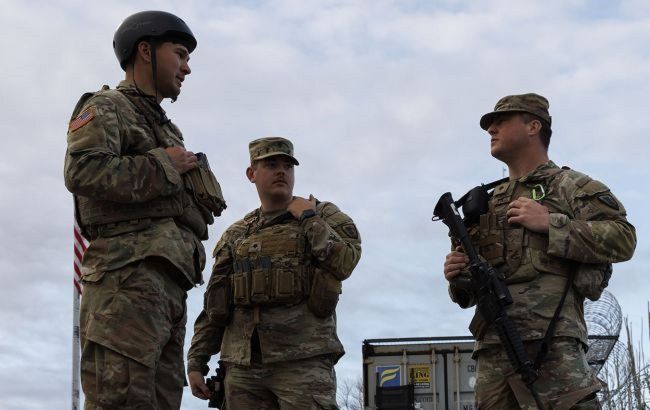Europe quietly braces for potential US troop reductions
 Europe has quietly begun preparing for US troop reductions (Illustrative photo: Getty Images)
Europe has quietly begun preparing for US troop reductions (Illustrative photo: Getty Images)
European NATO allies have begun quietly preparing for a potential reduction of American troops on the continent. They believe the US President is planning to shift part of the forces to Asia and the Middle East, Euractiv reports.
According to the article, although Washington has not officially announced any specific plans, European diplomatic circles are convinced that President Donald Trump is likely to initiate a reduction in the number of US troops stationed in Europe, currently estimated at around 80,000. A portion of those forces is expected to be redeployed to the Indo-Pacific region or the Middle East.
Discussions are focused on three key questions: how many troops will leave Europe, how quickly the drawdown will occur, and whether European countries can compensate for the absence of critical US capabilities — particularly in aviation, satellite intelligence, and logistics.
"It is not a question of whether there is a US drawdown, but how orderly it can be done without jeopardising existing alliance defence plans," said one NATO diplomat.
Last year, NATO updated its defense strategies outlining the Alliance's actions in case of a potential threat. However, these plans heavily rely on US military power—especially American weaponry, air power, and the presence of tens of thousands of troops needed to effectively respond to aggression.
Eastern NATO member states are particularly concerned about the possibility of a sudden reduction in US military presence in Europe. Some of them, in unofficial communications, are urging the Alliance to accelerate discussions on updating defense plans to be prepared in time for a significant reduction in the US role in the region.
Such a move by Washington is expected to significantly impact key US military bases in Germany and Italy, which serve as major logistical hubs.
European military officials acknowledge that although the region's armies are gradually building up their capabilities, they are still far from being able to fully replace US military potential — especially in areas such as air power, complex logistics, and satellite technology.
Ahead of the NATO summit in The Hague, US Ambassador to the Alliance Matthew Whitaker stated that the Pentagon plans to complete its assessment of the American troop presence in Europe by the end of summer or early fall.
According to him, any changes will be coordinated with NATO partners to avoid gaps in the collective security system, and withdrawn US units, if needed, could be replaced by forces from other allies.
Despite these statements, several European diplomats confirm that the allies have yet to receive concrete information from Washington regarding future military strategy.
This is causing concern among European defense planners, who fear that decisions may be made hastily and without proper coordination.
Assurances from Trump administration officials, including Secretary of State Marco Rubio, who earlier this year promised that there will be no surprises, have not fully dispelled those concerns.
US troop withdrawal from Europe
In early April, Bloomberg, citing sources, reported that European officials are almost certain the United States will withdraw part of its troops from Europe. The media noted that such a decision could undermine NATO countries' efforts to deter Russia.
Meanwhile, Lithuanian President Gitanas Nausėda stated that his country already has a contingency plan in case of a US troop withdrawal from Europe. According to him, Vilnius is strengthening its defense partnership with Germany.
At the NATO summit in The Hague, US President Donald Trump declared that the United States remains committed to the principle of collective defense within the North Atlantic Alliance.

